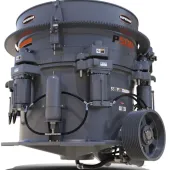Foundations for Conveyor Safety

Industry-first reference book from Martin Engineering presents global best practices for conveyor safety
MARTIN Engineering have announced the publication of the world’s first aggregation of global best practices dedicated to reducing conveyor risk and injuries.
Modelled on the company’s respected ‘Foundations’ reference volume, now in its fourth edition, the new book, ‘Foundations for Conveyor Safety’, provides an unprecedented collection of information, assembled specifically to help conveyor system operators achieve safe production.
To assess the true value of safety, the book includes groundbreaking methodology for calculating the payback from safety investments, sometimes referred to as ROS (return on safety).
‘This work is based on the premise that the extraction and processing of bulk materials can be done safely and profitably by applying global best practices for conveyor safety and design,’ said Martin Engineering’s chairman Ed Peterson. ‘The first step to true productivity is safety. If a conveyor, a plant or an industry is not safe, it cannot maximize productivity.’
‘This book is really a global round-up of best practices to keep safe those who must work on or around belt conveyors,’ observed lead author Todd Swinderman. ‘Part of that is recognizing the hazards, hardware systems and work practices that will improve safety. But it also includes methodologies on how to design conveyors to be safer, and how to justify the expenses for those improved systems.’
Mr Swinderman has been an officer and chair of numerous Conveyor Equipment Manufacturers Association (CEMA) standards-writing committees, and has served as chair, editor and driving force behind the sixth edition of the CEMA Belt Book: Belt Conveyors for Bulk Materials.
The new volume is a collaboration of experts with vast experience in bulk material handling, designed to educate readers by identifying hazards, danger zones and unsafe work practices around conveyors, helping raise awareness among management, operators and maintenance personnel.
Content on hazards, hardware solutions, safe work practices, risk assessment and safer conveyor construction leads to a summary discussion of the ROS investment and how to measure the payback.
‘The book’s first section discusses the dangers and potential hazards of conveyors, based on decades of experience in bulk handling,’ said product engineer Daniel Marshall. ‘That includes descriptions of the areas and components that pose inherent risks, as well as the unsafe practices that could lead to serious injuries or fatalities. Understanding the risks is the first step toward accident prevention.’
The following section on hardware solutions covers safety-related equipment such as sensors, switches and alarms, as well as a range of fixed components that includes hoods and covers, crossovers and guarding. The chapters also discuss dust and noise hazards, lighting and safe access, as well as electrical safety and signage.
In the section on work practices, the authors cover working safely around conveyors. They highlight fugitive material and its relationship to cleaner, safer and more productive conveying, as well as the importance of safety training and standard operating procedures to reduce risk, such as blocking the belt against motion.
‘We summarize international standards and regulations from around the world and offer suggestions for best practices,’ added co-author and primary editor Andy Marti.
The section on building safer conveyors highlights ways that safety can be ‘designed in’ when engineering new systems and retrofitting existing conveyors, including observations on how conveyors could/should be made safer.
The following section on payback provides readers with information on the accounting methodology for assessed risk, including analysis of the true costs, the return on conveyor safety (ROCS) investment and projected savings.
‘Many of the recommendations and methods detailed in the first four editions of ‘Foundations’ have become industry-standard approaches to resolving fugitive material issues and improving efficiency,’ said Todd Swinderman. ‘This volume is a change in direction from the tradition, in that it focuses exclusively on conveyor belt safety.’
‘Foundations for Conveyor Safety’ will be available to Martin Engineering customers and by request – in print and digital formats – and will be used in conjunction with Foundations 4 in the company’s conveyor safety training classes. The book can be downloaded from Martin Engineering's website.









